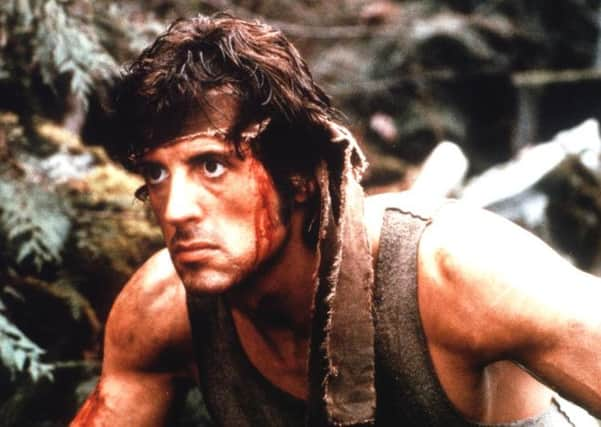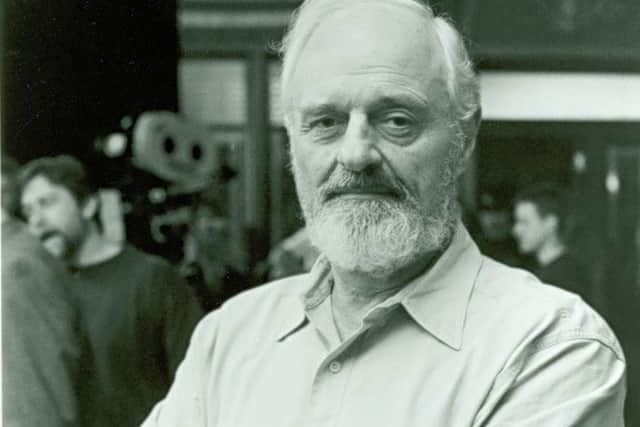Cult film’s new lease of life on festival circuit


He gave the world Joe Lampton, John Rambo and Duddy Kravitz. But perhaps Ted Kotcheff’s greatest triumph is the slice of “Ozploitation” machismo that is Wake in Fright.
Long thought lost, this strange and brutal tale of descent into darkness in the outback of Australia with a bookish schoolteacher being caught up in a dusty backwater was recently rediscovered and restored.
Advertisement
Hide AdAdvertisement
Hide AdRe-released onto the festival circuit – it played Leeds International Film Festival last year – it presents an outsider’s view of beer-swilling, trigger-happy Aussies for whom day-to-day entertainment means drinking, fighting and shooting kangaroos.


For 82-year-old Kotcheff it has meant delving back into a dim and distant past and re-connecting with arguably the most unusual title in his repertoire, and the most misunderstood.
Based on a novel by Australian journalist Kenneth Cook, Wake in Fright was adapted by Jamaican writer Evan Jones who pitched it to Kotcheff.
‘I know you enough, I know who you are and I know what you love and you’re gonna love this book. It’s a lost week in the outback of Australia. It’s right up your alley.’
Advertisement
Hide AdAdvertisement
Hide Ad“So I read it and I loved the characters and the intense atmosphere of it. I tried to stay very close to the book – this hyper masculine society that he writes about.”
Kotcheff was part of a Canadian vanguard that arrived in the UK in the late 50s and revolutionised British television.
Alongside contemporaries such as Alvin Rakoff he brought style and verve to a rather staid industry.
It was his passport to movies. He made his film debut in 1962 with Tiara Tahiti.
Advertisement
Hide AdAdvertisement
Hide AdThen, in 1965, he helmed Life at the Top, the rarely seen sequel to 1959’s multi Oscar-winning Room at the Top, which was largely made on location in Bradford.
He would later score highly with a string of very different movies: The Apprenticeship of Duddy Kravitz, with Richard Dreyfuss, North Dallas Forty, with Nick Nolte, and First Blood, with Sylvester Stallone as rampaging one-man army John Rambo.
Speaking from his home in Mexico, Kotcheff recalls his Yorkshire sojourn with affection.
“In 57 I left Canada and came over to London hoping to be able to get a film, and direct. And I did.
Advertisement
Hide AdAdvertisement
Hide Ad“I started first with Tiara Tahiti, with James Mason and John Mills, two great British actors. You couldn’t have asked for anything better.
Then, to do this extraordinary film, Life at the Top, up in Yorkshire. I felt blessed. I looked at it recently. It’s so tight and beautifully constructed. Terrific energy.”
Laurence Harvey reprised his role as man-on-the-make Joe Lampton and Jean Simmons took over from Heather Sears as his wife, Susan.
Honor Blackman played the film’s femme fatale and shot some major scenes in the city’s wool exchange.
Advertisement
Hide AdAdvertisement
Hide Ad“I loved working up in Bradford, too. What a great area! And Jean Simmons gave an extraordinary performance – the look in her eyes she could get sometimes.
“She was a joy to work with. I used to say to her ‘Where do you find this within yourself?’” he laughs.
“I love that film. To have the opportunity to do the sequel to Jack Clayton’s Room at the Top, one of the biggest and most successful British films of all time … wow! What a break for me, you know?”
Kotcheff’s films appeal to several generations. First Blood, from David Morell’s 1972 novel, is the truest interpretation of an iconic character that has now become part of 20th century movie lore. He also made Weekend at Bernie’s, another cult classic. But Wake in Fright eclipses them all.
Advertisement
Hide AdAdvertisement
Hide AdGary Bond plays John Grant, the schoolteacher headed for a weekend break with his girlfriend when he gets stranded in Bundayabba, a town seemingly populated by disturbingly insular, drag-knuckle Neanderthals.
Yet it’s Grant who becomes immersed in the lifestyle – the betting, boozing and, most controversially at the time, a nocturnal kangaroo hunt.
The film has it all: shades of Joseph Conrad’s Heart of Darkness, the sense of arriving at the end of the line, civilisation giving way to wilderness and Donald Pleasence as an alcohol-sodden doctor with a few nasty surprises in his Gladstone bag…
Many have seen Wake in Fright as a message movie. The man who made it won’t be drawn on the many threads that run through it.
Advertisement
Hide AdAdvertisement
Hide Ad“Everybody can interpret it as they like,” he says evenly. “What I set out to do was [make] an odyssey of self-discovery about a sensitive, educated man who succumbs to the shadow side of his own nature.
“He starts out feeling terribly superior to all the men out there but he finds that his sense of superiority is unwarranted because he does things that he never dreamed of to prove his virility.
“In a sense he becomes one of them.
“He finds that education and civilisation are a very thin defence against the yahoo in all of us. We’re all in the same existential boat; we’re all capable of things that are morally culpable.”
Wake in Fright is out now on limited release at selected cinemas.